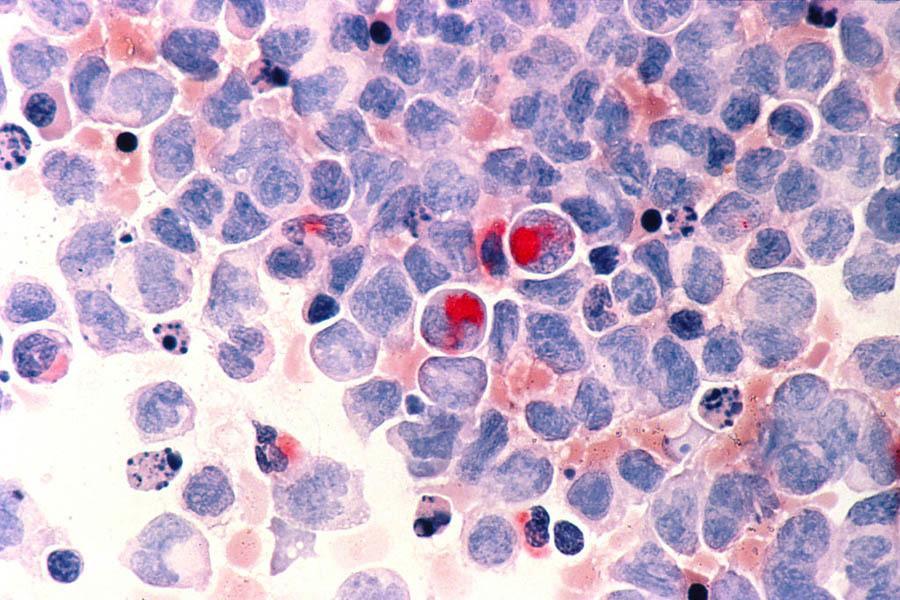7. Just-discovered process can make human Leukemia cells harmless.

Leukemia cells. Image Source: Wikimedia Commons
Stanford University professor Ravi Majeti and his colleagues were trying to keep a sample of leukemia cells alive for testing when they happened upon a fluke discovery. “We were throwing everything at them to help them survive,” he says. As they “threw” various proteins, one scientists noticed the cancerous cells begin to change shape and size, ultimately becoming macrophages — cancer-free immune cells. “Looking back at previous research in which a separate team managed to alter the growth of leukaemia cells in mice,” Science Alert wrote, “the team soon realized that cancerous lymphoblasts could be forced into mature, harmless macrophages when combined with certain types of proteins that altered their genetic activity.”
It’s already yielded some positive, real-world results: a girl named Layla Richards has undergone the therapy and many believe she is cured of her acute myeloid leukemia. Only time will tell the long-term effectiveness of the therapy, however.
8. Researchers dig up the remains of a new species of human ancestor in South Africa.

One of the excavation’s finds. Image Source: Flickr
In one of the most important archaeological discoveries in the last half-century, this year South African scientists excavated the bones of a previously unidentified member of our lineage, Homo naledi, in the Rising Star Cave. Also found within the cave’s narrow chute were the remains of possibly 15 more human ancestors from the same time frame — as early as three million years ago. In terms of genealogy, scientists are placing H. naledi — whose species name means “star” — between “Lucy” and “Handy man” Homo habilis.
This particular discovery also marks the most species’ fossils ever unearthed at one site. So far, more than 1,550 fossils have been discovered, with multiple examples of every bone found within the Rising Star’s all-but-hidden chamber. That the fossils seem to have been intentionally deposited in a concealed area has led some researchers to believe that not just modern humans, but pre-human species ritually buried the dead.
9. Researchers uncover evidence of water on Mars.

Image of Mars. Image Source: NASA
The discovery that Mars once held liquid water marked a high point in space exploration this year. While the revelation gave scientists reason to believe that the red planet may have once held life, it has also opened up even more questions. Here’s what scientists know so far: two-mile thick ice caps at each of the planet’s poles seem to shrink with temperature increases, but the water appears to skip the liquid state and instead turns to gas. They also know that frozen water lies underneath the surface, and that liquid water—when it’s around—is capable of pooling on the surface, as sheets of ice have been found lurking in the bottom of some shadowy craters.
When water in its liquid state can be found and tested, scientists will gain a better understanding of how likely we are to find life on the red planet, though current tests done on the streaked, once-water-containing slopes suggest that Martian water would be too salty to sustain life as we know it on Earth.
“It took multiple spacecraft over several years to solve this mystery, and now we know there is liquid water on the surface of this cold, desert planet,” said Michael Meyer, the lead scientist for NASA’s Mars Exploration Program. “It seems that the more we study Mars, the more we learn how life could be supported and where there are resources to support life in the future.”





